
|
 |
|
Last Updated: Aug 28th, 2006 - 01:36:21 |

GM SEQUEL: REINVENTED AUTOMOBILE NO LONGER JUST A DREAM,
IMPROVES UPON FIRST 100 YEARS
DETROIT - The bold push from General Motors Corp. to reinvent the automobile, first revealed in the AUTOnomy and Hy-wire concept cars, became that much more real today with the unveiling of the GM Sequel. The technologies embodied in Sequel, such as fuel cells, by-wire and wheel hub motors, have developed so fast that GM has been able to double the range and halve the 0-60 mph acceleration time, compared to current fuel cell vehicles, in less than three years, according to Larry Burns, GM vice president of research and development and planning.
"Three years ago, our chairman and CEO, Rick Wagoner, challenged us to completely rethink the automobile," Burns said. "The Autonomy and Hy-wire concepts were the outgrowth of that challenge - a revolution in how vehicles would be designed, built and used in the future. But, they were concepts. Today, with Sequel, the vision is real - not yet affordable, but doable."
Sequel embodies GM's vision of reinventing the automobile with a fusion of technologies that includes advanced materials, electronic controls, computer software and advanced propulsion. According to Burns, it's an exclamation point for GM's comprehensive global advanced technology strategy that is addressing efficiency and emissions, from today's engine and transmission technology to hybrids and, eventually, fuel cells as the ultimate answer.
"GM's goal," Burns explained, "is to design and validate a fuel cell propulsion system by 2010 that is competitive with current internal combustion systems on durability and performance, and that ultimately can be built at scale affordably."
What excites Burns is that Sequel's performance is achieved with technology available today and does not depend upon some science yet to be invented.
"We've achieved remarkable gains in range and acceleration by using our fuel cell system technology that exists today," Burns said. "That's a real breakthrough. For anyone tracking the viability of fuel cell vehicles, this is encouraging news."
Sequel, about the size of a Cadillac SRX, travels up to 300 miles on its hydrogen supply, and accelerates to 60 mph in less than 10 seconds. Current-generation fuel cell vehicles have a range of between 170 and 250 miles and cover 0-60 mph in between 12-16 seconds, depending upon whether a battery is used.
"With Sequel," Burns said, "virtually everything is packaged in an 11-inch 'skateboard' chassis, building on what we first showed the world in the AUTOnomy and Hy-wire. Sequel points to a vehicle that, in the future, will be better in nearly every way - quicker, surer-footed, easier to handle, easier to build, better looking, safer and only emits water vapor."
Other benefits include:
 |
Unequaled control on snow and ice, or uneven terrain |
 |
42-percent more torque for unparalleled acceleration |
 |
Shorter braking distances |
While Sequel should excite customers, it also should encourage world governments, Burns added, because of its potential to address societal concerns.
"Sequel helps address major societal issues, from eliminating auto emissions, to helping the world transition to renewable and stable energy supplies, to reducing the chance for crashes and traffic congestion," Burns said.
|
Watch the Sequel in the Field |
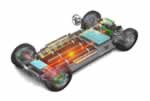 |
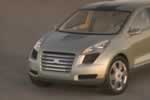 |
|
2006 GM Sequel Concept
Technical and Mechanical Specifications
General
|
Vehicle type: |
all-wheel-drive crossover vehicle with fuel cell and by-wire technology |
|
Chassis: |
aluminum substructures |
|
Body: |
aluminum body / frame integral structure with aluminum panels |
|
Seating capacity: |
4 or 5 |
Dimensions
|
Wheelbase (in / mm): |
119.7 / 3040 |
|
Length (in / mm): |
196.6 / 4994 |
|
Width (in / mm): |
77.4 / 1966 |
|
Height (in / mm): |
66.8 / 1697 |
|
Curb weight (lb / kg): |
4774 / 2170 |
Fuel storage system
|
Type: |
3 carbon composite high-pressure tanks for hydrogen mounted in the sandwich chassis |
|
Service pressure (psi / bars): |
10,000 / 700 |
|
Storage capacity (lb / kg): |
17.6 / 8 |
Fuel cell power module
Battery system
|
Type: |
lithium ion high-power battery pack |
|
Power (kW): |
65 |
Electric traction system
|
Front system: |
3-phase asynchronous electric motor with integrated power electronics and planetary gear |
|
Power (kW): |
60 |
|
Torque at the wheels (lb-ft / Nm): |
1740 / 2350 |
|
Gear ratio: |
10.95:1 |
|
Rear system: |
2 3-phase permanent magnet synchronous electric wheel hub motors |
|
Power (kW): |
2 times 25 |
|
Torque (lb-ft / Nm): |
2 times 369 / 500 |
|
Gear ratio: |
1:1 |
|
Total traction power (kW): |
110 |
|
Total torque at wheels (lb-ft/Nm): |
2506 / 3398 |
Performance
|
Acceleration 0-60 mph (sec): |
< 10 |
|
Top speed (mph / km/h): |
90 / 145 |
|
Operating range (miles / km): |
300 / 480 |
2006 GM Sequel Concept
Image Gallery |
|
|
  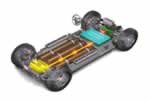 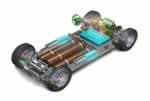 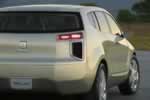 |
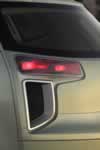 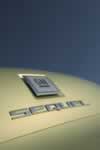 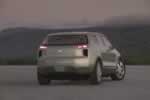  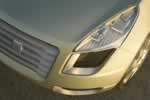 |
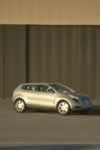  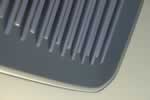 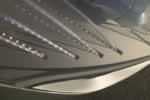  |
 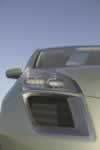 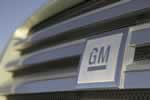 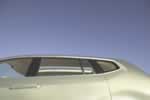  |
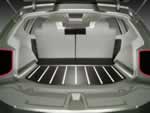  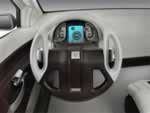 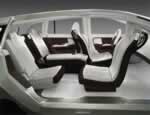 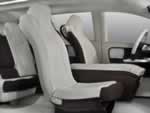 |
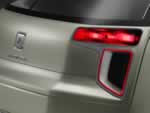 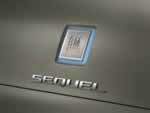 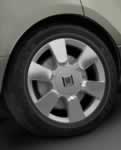  |
Discuss this article on AutomotiveForums.com
© Copyright 2006 by AutomotiveArticles.com
Top of Page
|
|
 |
|

 AF Project Vehicle | Corporate
AF Project Vehicle | Corporate



 AF Project Vehicle | Corporate
AF Project Vehicle | Corporate

